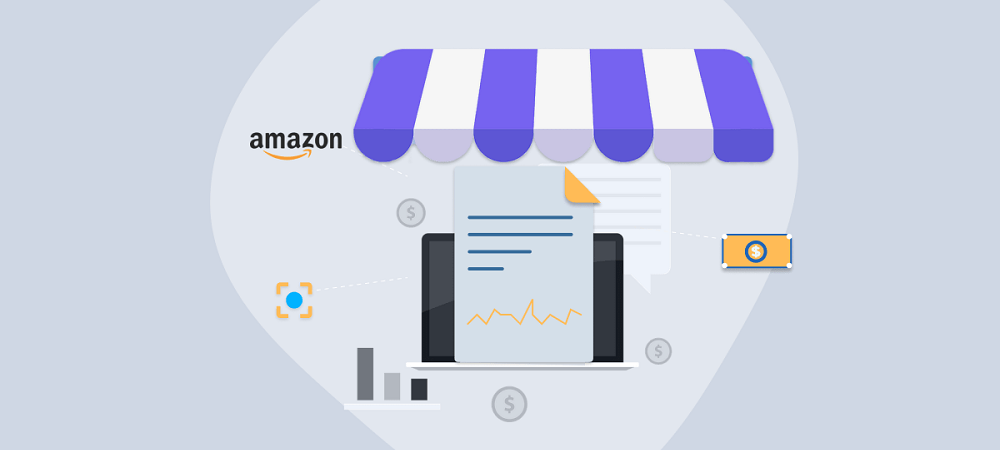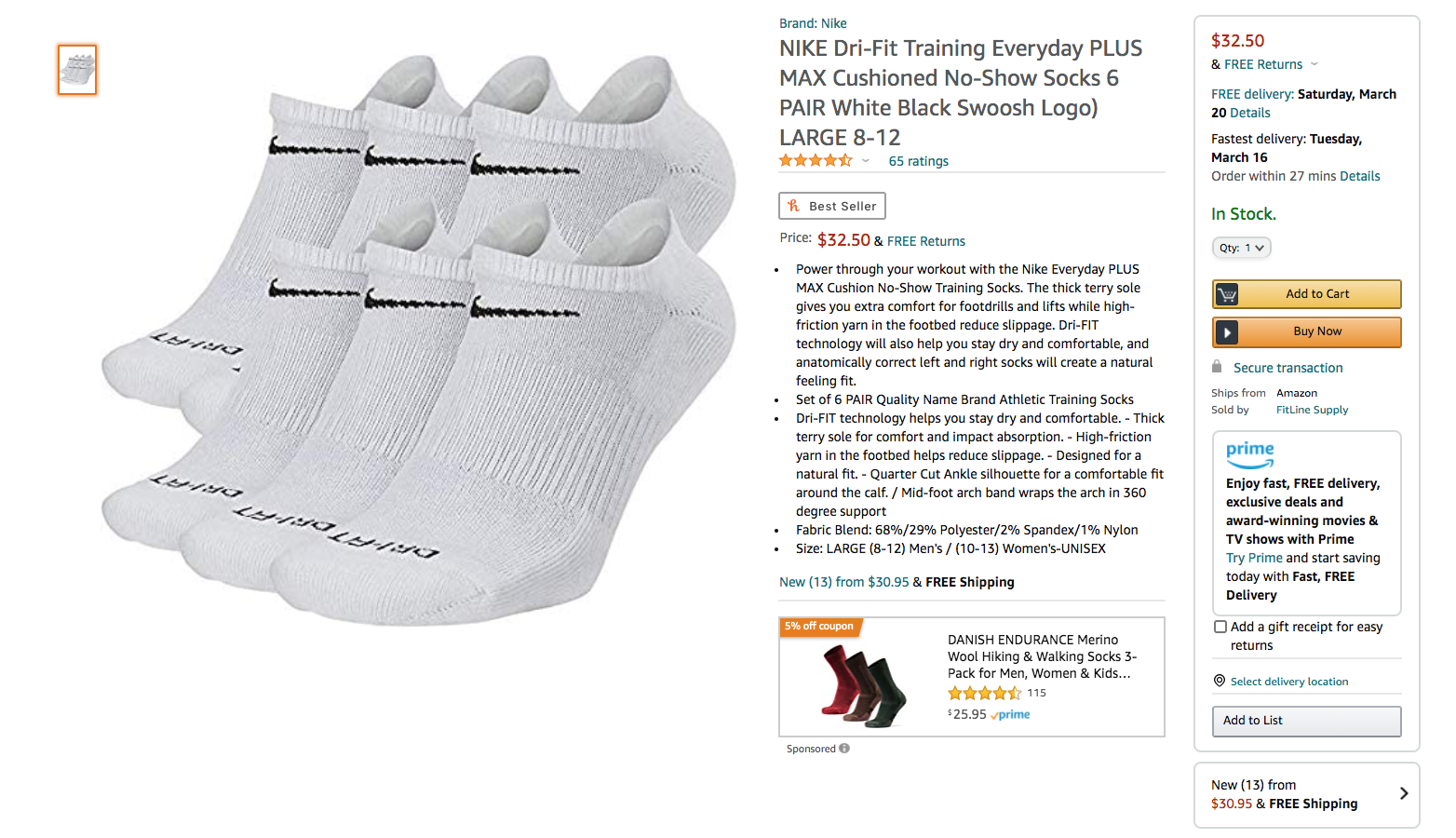
Reselling on Amazon isn’t as glamorous as it was pre-2010, yet there are versions of the practice that are still valid on the platform in 2021. But is it worth it to pursue them?
In the early 2000s, Amazon consisted entirely of resellers; no individual brands were using Amazon. Resellers would create a stand-alone website or a brick-and-mortar store to sell their product. However, they were not able to reach a high volume of customers or have a worldwide reach, so resellers began to use Amazon to reach a global marketplace. The term “reseller” originated on Amazon because people were “reselling” on the site. It was a great source of revenue for many who joined the platform at an early stage.
However, as Amazon reselling became more popular, the competition grew with tons of new resellers entering the market. Eventually, the competition was so fierce that it pushed companies to dramatically drop their prices which, along with increased Amazon fees, meant decreased profits for resellers.
Today, this same issue exists. Many resellers find it tough to make a decent income because of the rise of competition and low-profit margin. Mainly because there is no restriction on how many resellers can enter the market or list the same product. Plus, Amazon’s FBA (Fulfillment by Amazon) program makes it simple for anyone to resell products, which creates a low barrier to entry.
However, depending on the market or niche you choose, it can still be very profitable to enter the reseller market. Your success in the reseller market will depend on the amount of effort you put in, the type of products you choose, and, most importantly, your branding strategy.
When creating a branding strategy it pays to use an expert like Emplicit, a top-tier, results-driven Amazon marketing agency for growing ecommerce brands, as we have experience growing Amazon sales and dominating the competition with a more substantial brand presence, for many clients.
Why reselling is still practiced on Amazon (& how to spot it)
Purchasing cheap products in bulk, slapping your logo on them, and selling them at 10x the original price is the opposite of what Amazon stands for. But not all resellers act this way.
Dropshipping, the process of selling products that you have not purchased yet, and direct reselling are not allowed on Amazon. To list a product on Amazon, you must be the seller of the products.
So, how can resellers still create a living on Amazon? Premium branded experiences! By using your platform to build premium branded experiences, you’ll contribute to your brand’s success and start to eliminate some of your competition while bringing in a profit.
Great reselling is all about developing an amazing brand
Just like Red Bull outsources the entirety of its production to third parties so they can focus on branding and marketing, so can resellers on Amazon. Creating a solid brand experience will keep customers coming back and attract new customers to your brand over your competition.
If you’re wondering how to become an Amazon reseller, you’ll need to start by picking your products. Think about the problems you face and products that can help to solve them. When choosing your products, you either want to sell products with low competition and no proven success or high competition products with high proven success.
If this is your first-time reselling on Amazon, consider conducting product research to find low competition products that don’t have success yet. Your product research will ensure it’s a profitable idea and that the merchandise is actually in demand.
If you’d prefer to go with high competition, high success items, you need to provide branded experiences to help your products stand out from the rest. This could include stellar customer ratings, price, and specific product features.
4 key differences between selling & reselling on Amazon
If you’re considering finding a reselling venue on Amazon, you’ll certainly want to know what makes your practice different from other brands on the platform. However, it’s hard to tell who are the resellers or sellers if you don’t have an eye for it and experience.
So how do you spot a reseller? Do they all look the same? There are some significant differences between selling and reselling that will help you learn where the difference truly lies.
Difference #1: The ‘sold by’ name won’t match the brand’s name
The easiest way to spot an Amazon reseller is to look at the “Sold By” name listed on a product’s page. To find this information, you need to look in the “Add to Cart” area of the page. There will be two lines that say, “Ship From” and “Sold by.” If the Sold By name is not the same as the brand name you’re purchasing from, it is being sold by a reseller. For example, the Nike socks shown below are Nike Brand but are sold by Fitline Supply.

Difference #2: No specific warranty available on reseller products
Resellers do not typically carry any separate warranty for their products. Plus, if they’re not an authorized seller, the manufacturer warranty won’t apply anyways. Check into the product description to see what type of warranty or guarantee they offer. If you can’t find any answers, check the question area or reviews to determine if a warranty exists.
Difference #3: The reseller’s Amazon page sells products from different brands
If you’re looking at a reseller’s company page, you’ll most likely notice multiple brands featured in one place. One of the benefits of becoming a reseller is that you can always find new suppliers and products that will increase your sales revenue and add value to your product line.
It’s common to see multiple products featured on the reseller’s page, while sellers typically only emphasize their own brand or product line. For example, the reseller below has 14 different brands they sell on their page from Adidas to Disney Parks.

Difference #4: The “Sold by Amazon” label is exclusive for 1P sellers
First-party (1P) sellers are given an exclusive title when vendors fulfill or accept Amazon’s purchase order for your products. They are branded as “Sold by Amazon.” Resellers cannot obtain this same label. Resellers must manage and maintain their own profits and products. They can choose to enroll in Amazon’s FBA process, but it still won’t label reseller’s products as “Sold by Amazon.”
In almost all cases, reselling will lead to significantly lower margins (unless you’re able to create an incredible brand, sort of like Red Bull). So you’ll hit a ceiling in terms of growth at some point.
Make reselling on Amazon all about your brand
A cookie-cutter product without a story to tell is just another gadget that will end up in the drawer in just a few days, never to be seen again. You have to make reselling all about the brand story.
Telling a story with your products is an easy way to connect with your customers. Good product stories tend to follow a comfortable or familiar pattern. These types of mental shortcuts help our brain to cut out extra thinking. Plus, good stories will impact a customer intellectually and emotionally to make them pay attention.
The Storybrand framework is an excellent method to follow when crafting your brand’s story. In seven short steps, you can create a memorable branding experience for your customers.
- A character: Identify who your ideal customer is and what they want. The ideal customer will be the hero in your brand’s story.
- Has a problem: Stories need some type of problem or strain that negatively impacts your ideal customer. It could be a feeling they aren’t expressing, a physical challenge, or an injustice your brand can help the character get through.
- Meets a guide: There has to be a solution provider to help your hero succeed, which is your brand. You want to use this area to demonstrate authority and express empathy by using industry certifications, impressive statistics, or testimonials.
- Who gives them a plan: Once you’ve earned your hero’s trust and identified their problems, your story needs to layout steps to their solution or plan to fix their issues.
- That calls them to action: Your hero should want to do something about their problem, so it’s essential to include a call to action, such as schedule an appointment or buy now, along with areas to learn more information, or request a demo.
- That results in: Show your ideal customers how your products make their life better or successful.
- And helps them avoid failure: Show what will happen if the hero does not use the provided solutions, aka failure.
Let the experts help you build a successful reseller business
If the idea of building premium branded experiences sounds like too much work, you can always contact a professional Amazon marketing agency, such as Emplicit. Emplicit will help optimize your reseller Amazon account by using reseller best practices to save time and money on Amazon and provide success to your brand in the reseller world.

